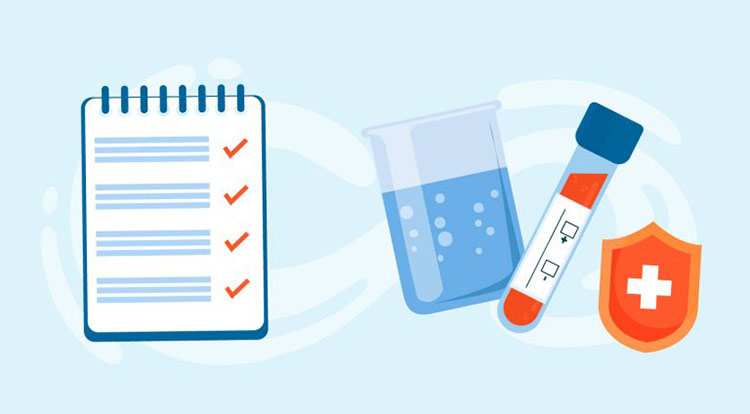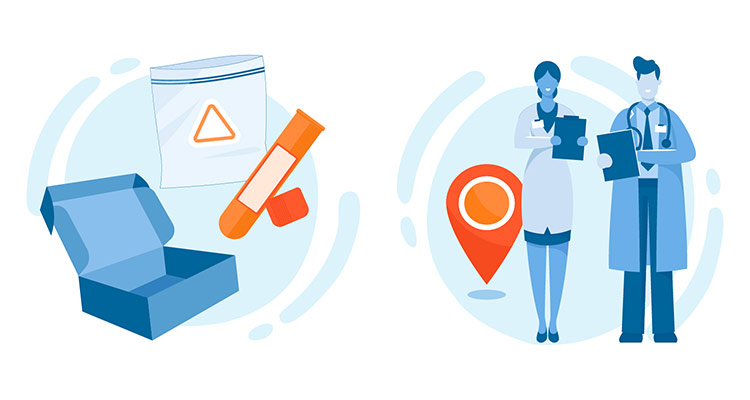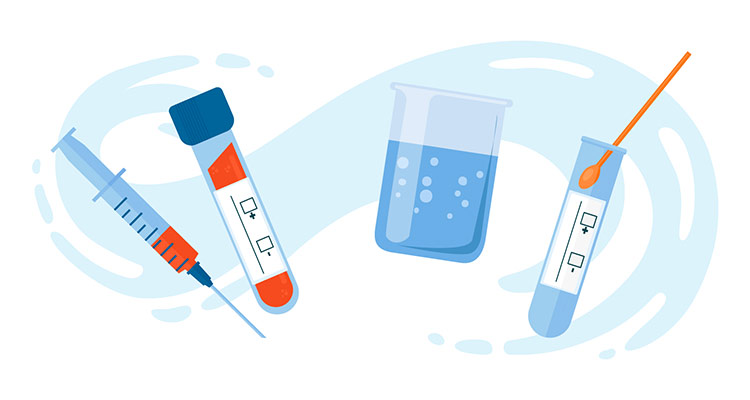It’s normal to be concerned about STD testing accuracy if you’re getting tested. Getting tested can be an inconvenience for some, or you might just feel uncomfortable about the process in general. While it’s our mission to make the process as comfortable and convenient as possible, we understand that no one enjoys getting tested, so you want to make sure your testing experience is worthwhile by getting accurate results.
STD Testing Accuracy
Getting inaccurate results for STI testing can defeat the entire purpose. A false negative could have you thinking you don’t have an infection, when in fact you do, causing you potential harm from leaving the infection untreated and putting your partners and others at risk of infection transmission. A false-positive result can be upsetting and potentially embarrassing for you and your partners, and could even lead to you taking medication to treat an infection you don’t even have, which could cause harsh adverse effects. Low-cost STD testing can also be a significant variable affected by accuracy–the more accurate the test, the less likely another test should be needed.
So, how do you ensure you get an accurate STD testing result? There are a few different methods to consider.
STD Testing Kits vs. STD Laboratory Testing
STD Testing Kit Accuracy
STD kits, while convenient and private, can pose a number of threats to testing accuracy and precise results. There are a few reasons why the idea of an STD kit seems appealing. You can take the test at your convenience, in the privacy of your home, and then mail the kit back when you’re done. You’re spared any awkward conversations or office visits with your doctor or another healthcare worker, and you’re relatively in control of the entire testing process.
While it seems great in theory, the reality is that STD testing kits are often not as accurate as tests performed in a clinic or lab because of the potential for user error. At-home STD testing requires that you collect your own samples and then mail them back, and if they’re not done correctly, your test might be invalid or return an inaccurate result.
Because of these and other factors, such as issues that arise while the kit is being shipped to or from your home, self-administered testing kits are frequently responsible for false-negative results, more so than testing performed at a lab or testing center.
Aside from the possibility for inaccurate results, STD testing kits, while it seems like a more private experience, the opposite can be true if someone you live with discovers the box or someone on your street or in your building sees it on your doorstep or in your hands as you walk back to your home. It’s also not nearly as quick as some other STD testing options, either, given that it can take time for the kit you ordered to arrive, to get back to the lab, and for you to get results.
STD Laboratory Test Accuracy
STD lab testing is much more accurate than self-administered testing because, to start, it eliminates many of the factors that can result in inaccurate results from an at-home kit. Because STD laboratory tests are performed by certified labs with trained and experienced technicians, you greatly reduce the risk of a false test result because of user error. Having testing done at a lab also greatly reduces the risk of your sample being contaminated or otherwise damaged, like it could be during or after an at-home test procedure. The lab technicians know how to properly prepare and handle your samples, and in most cases begin processing the samples right away.
While a lab test environment might seem like you’re sacrificing the privacy that an STD test kit can provide, in almost all cases, the lab technician collecting your samples doesn’t know what you’re being tested for, just what samples they need to collect. They won’t know whether you’re there for an STD test or some other kind of routine health testing, so there’s no need to be embarrassed during your lab visit.
STD Test Accuracy by Method
Beyond the varying levels of accuracy for lab and at-home testing, the method of collection that either requires can also affect how accurate your results are.
STD Blood Test Accuracy
STD blood testing is one of the most common methods of STD testing, and one of the methods our STD laboratory tests use. These tests are used to diagnose HIV, genital herpes, hepatitis and syphilis. Blood tests work by testing for your body’s response to one of these infections. If your body has developed antibodies to try to fight off the infection, it means the infection is present or there has been an infection in the past.
Blood testing is also a common testing method in self-administered STD testing kits. Again, while the same potential issues exist for both at-home and lab testing, self-administered testing has the same increased opportunities for inaccurate tests and user error as mentioned above.
STD Swab Test Accuracy
STD tests can also be administered in the form of a swab. These swabs can be administered orally or rectally and are often used to test for oral and rectal chlamydia and gonorrhea, which often can not be detected through other methods. Swab testing is widely regarded as the most uncomfortable test to have done. Unless you need to be tested specifically for one of these forms of chlamydia or gonorrhea, we recommend skipping it.
Swab tests can be administered through self-adnimistered tests or through a medical provider, such as a clinic or doctor’s office. As with other testing methods, there is less of a risk for potential inaccuracies with laboratory tests, but many users prefer the comfort, convenience and privacy of performing the swab test themselves.
STD Urine Test Accuracy
Urine testing is the other testing method performed by our lab partners. Urine tests are usually used to test for bacterial infections, such as chlamydia and gonorrhea. These tests check for the bacteria’s presence in your urine. While urine tests are fairly accurate, they are not quite as accurate as cervical or urethral samples that can be collected by your doctor. But, if you don’t have the time or availability for a doctor’s visit, urine testing can be a quick and fairly accurate way to test for these infections.
As with the other test methods mentioned, urine samples are also commonly collected as a part of an STD testing kit, with the same potential for user error and other kinds of inaccuracies.
Rapid STD Testing Accuracy
In addition to the factors affecting the accuracy of any of these testing methods, there’s another variable that can affect your test results, and that is the “latency” or “incubation” period for the infection being tested for. The latency or incubation period is the time it takes for your body to develop a detectable amount of the infection from the initial transmission of the infection. If you get tested too early, there’s a chance that the test might not be able to detect the infection, which can lead to a false-negative result.
Thankfully, early detection tests are also available for most of these infections. To ensure the most accurate results, look up the incubation periods for the infections you want to be tested for before ordering your testing. These incubation periods can vary by infection, so make sure you check.
Are STD tests accurate enough?
While we’ve outlined many possible variables that can affect STD test accuracy, the most important thing to know is that inaccurate results tend to be rare. With the proper lab testing process, they’re exceptionally rare, and you usually don’t have to worry about the potential for a false result. For convenient and accurate STD testing, order your tests through Priority STD Testing today at one of our professional STD testing centers. By being knowledgeable of the different factors that affect STD testing accuracy and how you can properly control them, you’re more likely to ensure that your test results are accurate.



